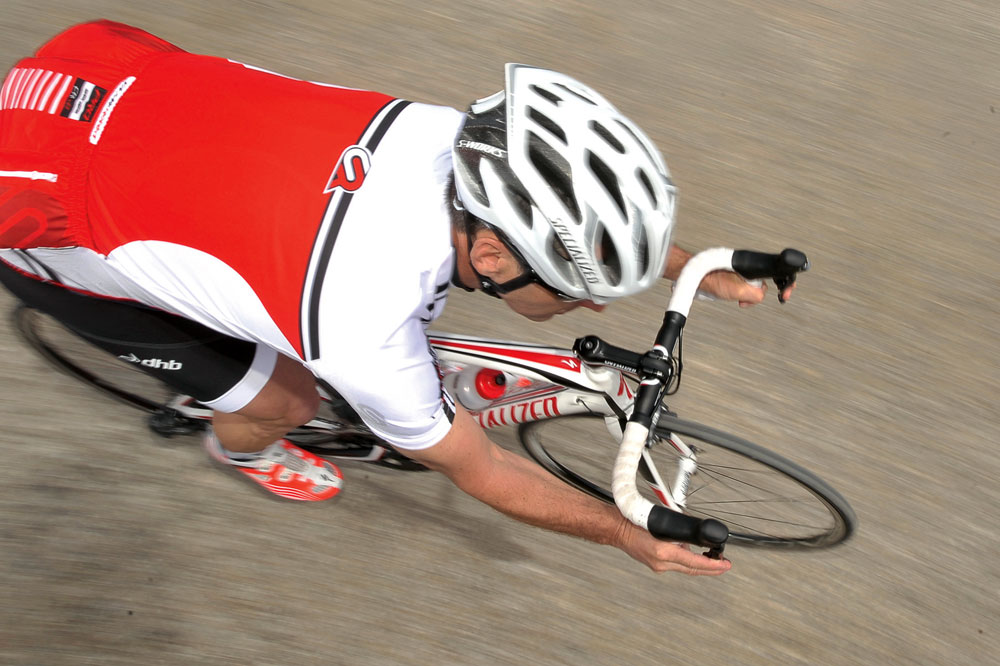Cycling can improve brain health

The good news is that regular, vigorous endurance exercise such as cycling can help to slow down many of the negative physiological changes that occur due to aging, as well as reduce the risk of a number of degenerative diseases such as coronary heart disease and some types of cancers.
The bad news, however, is that the human brain can also undergo deterioration in later life, leading to conditions such as dementia.
The most common form of dementia is Alzheimer’s disease, characterised by symptoms including memory loss, confusion, mood changes and difficulty with day-to-day tasks. Dementia is a growing problem affecting 820,000 people in the UK alone. There is currently no cure for Alzheimer’s disease or for most other causes of dementia, nor can a cure be expected in the near future.
However, some researchers have suggested that long-term regular exercise may protect against dementia, possibly by increasing cerebral blood flow, thereby aiding the health of brain tissue. And now a new study on cerebral blood flow in cyclists provides a new and valuable insight into this area.
The science
In the study, 10 subjects rode a stationary bike at a moderate intensity while the blood flow in their brains was measured using a very accurate technique known as Positron Emission Tomography (PET). Before the cycling session, subjects drank water containing radio-labelled oxygen-15 — a form of water that emits particles called positrons.
The flow of water (and therefore blood) around the brain could then be imaged as they cycled. When the subjects began pedalling, the blood flow to the brain as a whole (global flow) rose by nearly 28 per cent compared to resting and in certain areas of the brain, it rose by over 70 per cent!
The latest race content, interviews, features, reviews and expert buying guides, direct to your inbox!
Towards the end of the ride, the global flow fell back to that of resting levels but in two regions — the sensorimotor cortex for the legs and cerebellar vermis, it remained elevated by up to 40 per cent.
J Cereb Blood Flow Metab. 2013 Dec 4. doi: 10.1038/jcbfm.2013.220. [Epub ahead of print]
The bigger picture
This study is important because it’s the first ever to accurately measure cerebral blood flow rates during exercise using PET, the brain-scanning method of choice in early-onset cases of dementia such as Alzheimer’s disease. The large rise in cerebral blood flow during pedalling, especially during the transition from rest to activity is interesting for two reasons: firstly, it might help explain the recent findings that regular aerobic-type exercise appears to reduce the risk of developing dementias such as Alzheimer’s(1).
Secondly, because the greatest increase in cerebral blood flow occurred shortly after exercise commenced, exercise that involves many such transitions — such as interval training — could be especially useful for maintaining brain health. This would also tie in with the fact that relatively high-intensity exercise is known to be particularly effective at combating cognitive decline in older adults(2).
Applying the science
The most recent evidence indicates that cyclists who want to minimise their risk of developing dementia should keep pedalling vigorously right into old age. In particular, it suggests that cyclists over the age of 60 should consider:
- Cycling for 45-60 minutes of at 75-85 per cent of heart rate reserve (NB your heart rate reserve = your maximum heart rate – your resting heart rate) four times a week.
- Including some regular interval training, which may be especially effective at enhancing cerebral blood flow.
Meanwhile, if you’re an older person who is currently inactive, the good news is it’s never too late to get pedalling and reap the rewards!
1. Brain Res. 2013 Nov 20;1539:95-104
2. J Alzheimer’s Dis. 2012;28(1):137-46
Founded in 1891, Cycling Weekly and its team of expert journalists brings cyclists in-depth reviews, extensive coverage of both professional and domestic racing, as well as fitness advice and 'brew a cuppa and put your feet up' features. Cycling Weekly serves its audience across a range of platforms, from good old-fashioned print to online journalism, and video.